Khasgi, An Institution Exclusive to Senior Maharanis of Holkar Dynasty - Part I
Written by : Amita Roy
Dated: December 03,2020
Share
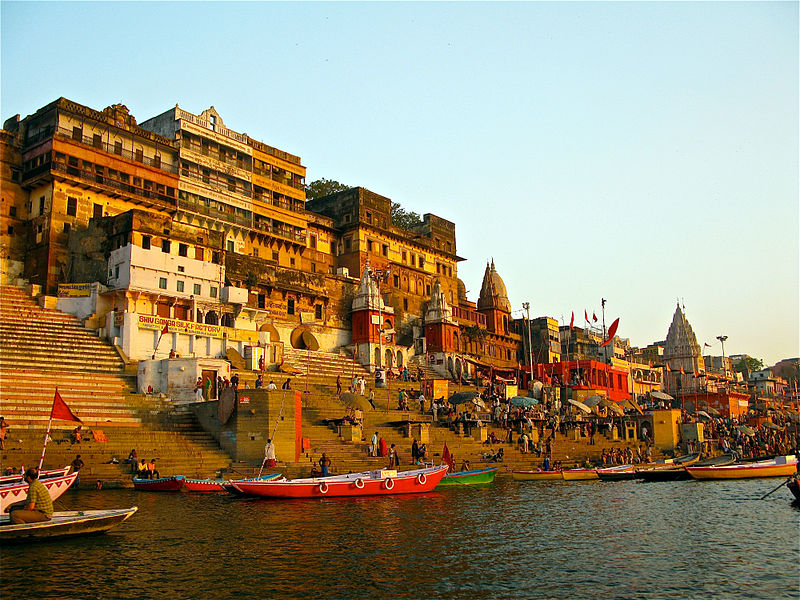
Ahilya Ghat, Varanasi
On a particular morning at the end of October, while sipping breakfast tea sitting in the balcony of the 300 years old Brijrama Hotel, my eyes rushed through the headlines about a news article on the Khasgi Trust and their ongoing litigation in Supreme Court. Being in Varanasi, and reading a news about Khasgi Trust, you know how deeply the history of Varanasi, Khasgi and Holkars are intertwined with each other for last 300 years.
Varanasi has 84 Ghats, numerous temples, foremost important is the Kashi Vishwanath Temple, the soul of Varanasi, the age of the temple which cannot be ascertained, destroyed by Mughal Emperor Aurangzeb to build Alamgir Mosque on the actual spot which was later rebuilt in the same compound by Maharani of Indore Ahilyabai Holkar in late 18th century from the Khasgi funds. Other Khasgi properties in Kashi are Nagwa Bagicha, Indore Palace Estate.
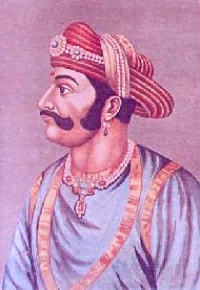
Maharaja Malharrao Holkar, founder of Holkar dynasty and husband of Maharani Gautamabai.
There were two treasures in the Holkar regime. One Daulati and another special treasure. The treasury treasury was for public expenditure. This treasure was owned by the queen. Later, Khasgi became treasured and special, in which the amount of loot and smuggling received on winning the war and the jagir began to accumulate. Khasgi was always a separate establishment completely different from the Indore state which had its own treasury and administration.
The antiquity of Khasgi goes back to 1734 when as an Inam lands, it was conferred by Peshwa Baji Rao I on Gautamabai , wife of Malhar Rao Holkar, in perpetuity. Malhar Rao had applied to Chimnaji Balal, the brother of Peshwa who supported this request. In no Maratha or other Indian states, no such thing as ‘ Holkar Khasgi’ exists. The Khasgi is the estate of ruling sovereign’s consort to be managed entirely by the latter and separate from Daulat. The talukas given for Khasgi will continue forever – Maheshwar, Choli, Indore, Hanola, Depalpur, Mahidpur, Barloi, Jagoti, Makdone, Chandwad, Ambad with Mogalai villages. Khasgi is an unique institution which exists even today to explore the liberal latitude energy of administration capacity and charitable inclinations of the consorts or senior Maharanis of the sovereign rulers of Indore. During reign of Peshwa Madhava Rao, he issued a separate Sanad for daughter in law of Maharaja Malharrao Holkar and Maharani Gautamabai, the pious Maharani Ahilyabai Holkar.
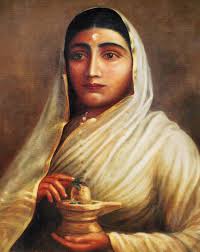
Maharani Ahilyabai Holkar.
As per V. P. Menon, ‘ Khasgi is an institution typical to Indore which consists of land and other property given by special grant by the Peshwa to the wife of Malhar Rao Holkar, the founder of the Holkar dynasty. The income of this property is intended to furnish pocket money to the senior lady of the Holkar house. During the reign of Maharani Ahilyabai, a considerable part of the income from Khasgi was devoted to charities throughout India. Since her time, these charities have continued their existence and only a part of the is available as private allowance to the senior lady of the house. The Maharaja of Indore attaches special importance to this historic gift given by the Peshwa only to the Holkars, among all the Generals. “
Succession to the Khasgi estate has always been a bone of contention between the dowager Maharanis and the newly installed Holkar Maharajas since the time of Maharani Ahilyabai Holkar. After 1857, when company rule was dissolved by the Crown, disputes regarding the succession to the Khasgi Gadi arose from time to time.
In 1888, Dowager Maharani Bhagwatibai Holkar, wife of Maharaja Tukojirao II Holkar, who succeeded the Khasgi Gadi since 1865, expired on 24th October while on her way to pilgrimage to holy places in Benaras. During the last moments before her death, she telegrammed her will to the Governor General of India. Her will clearly reflected that after her death, the next Dowager Maharani as per seniority, Maharani Radhabai Holkar should be made successor to the Khasgi Gadi. As per traditions since the seven generations post Maharani Ahilyabai Holkar, the successor to the Khasgi Gadi was ascertained based on either of the two conditions –
1. The Dowagers Maharanis succeed as per their seniority;
2. The Maharani or wife of the Maharaja succeeds.
She also expressed her anguish in her will that her servants and dependants who consists of the management of the Khasgi might be threatened and made vulnerable by the then Maharaja Shivajirao Holkar, who might appoint his Dewan to take over the administration of Khasgi in the name of Indore Durbar. Previously, also many deceased Holkar Maharajas tried to take over the Khasgi Gadi in the name of Indore Durbar but the British Government interfered reinstating the fact that the Holkar tradition and custom on Khasgi since Devi Ahilyabai should be maintained. By the time, this telegram reached the Governor General, Bhagwatibai had expired.
Maharaja Shivajirao Holkar.
In the next 12 days post death of Maharani Bhagwatibai, various communications were sent by Maharani Radhabai Holkar, her son Balasaheb Yeshwantrao Holkar and his uncle, Kashirao Holkar who literally was managing the Khasgi management, expressing their insecurity and vulnerability that Maharaja Shivajirao Holkar might install his wife Maharani Banarasibai Holkar as the successor to the Khasgi Gadi or might take over the Khasgi treasury in the name of Indore Darbar post completion of 12 days of mourning period as per Hindu customs. The succession should be deferred till completion of 12 days of mourning and that last will of Maharani Bhagwatibai should be respected. The office of Governor General of India replied promptly that as Khasgi was an internal matter of the Holkar dynasty, the British Indian Government cannot interfere but Maharani Radhabai can consult the Agent to the Governor General.
Despite several memorials and communications sent by Maharani Radhabai Holkar for her claim as the successor to the Khasgi Gadi to the office of the Governor General and Viceroy of India, Maharani Varanasibai Holkar succeeded the Khasgi Gadi in 1889. The revenue generated from Khasgi villages were little over Rs 6 lakhs.
.jpg)
Report of missing Khasgi treasury in 1894 in international newspapers.
A mishap happened in 1894 when treasures worth Rs 9 lakhs were missing from Khasgi treasury which included cash, gold and silver jewelry, silver articles that were presented to Khasgi treasury from Jawahir Khana by late Maharani Bhagwatibai Holkar. She had informed the then Maharaja Shivajirao Holkar who was aware of the things and also his junior step mothers were also aware. Hence when the treasures went missing, Maharaja suspected that his junior stepmoms might be involved and lowered their allowances till an inquiry was finished off.
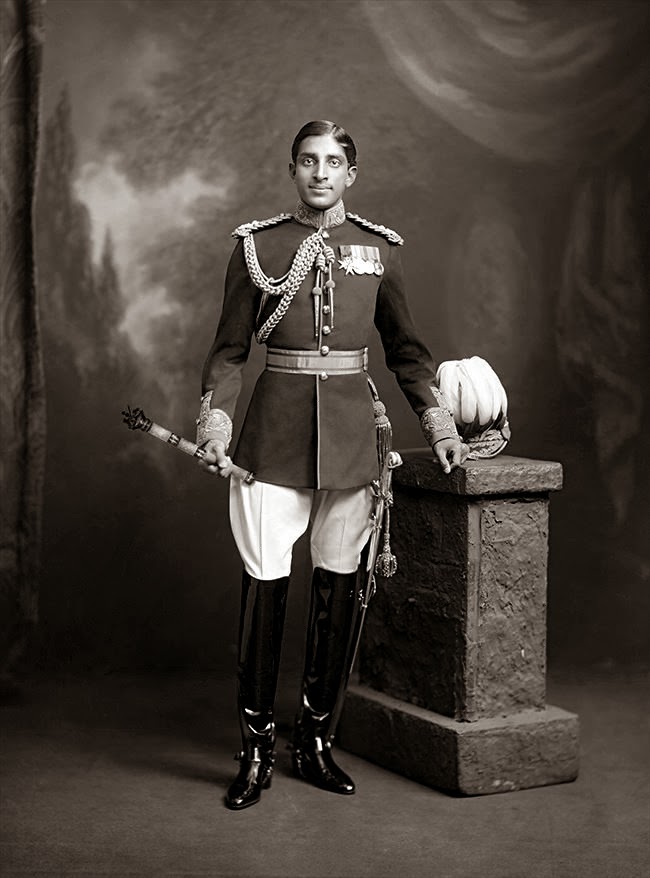
Maharaja Tukojirao Holkar
Meanwhile in 1904, after the abdication of throne by Maharaja Shivajirao Holkar, the Indore Regency Council issued an order of amalgamation of Khasgi with Daulat accounts revising the Khasgi arrangement of exchanging certain Khasgi villages with certain state villages. The practice of maintaining separate accounts were discontinued though annual adjustments with the state account was made. During the period of 1912-1924, the annual payments made to the senior Maharani of Maharaja Tukojirao Holkar ranged from Rs 150000 to Rs 211000 on Khasgi. After abdication of HH Tukojirao Holkar, the payment to Maharani Chandravatibai Holkar became regulated under specific terms and conditions of the abdication. In the schedule of conditions related to abdication, about Khasgi and the wives of HH Tukojirao Holkar, that the allowances made to the Senior Maharani and Junior Maharani which were Rs 164900 and Rs 86500 respectively on accounts from Khasgi shall continue in the lifetime of Maharaja Tukojirao Holkar.
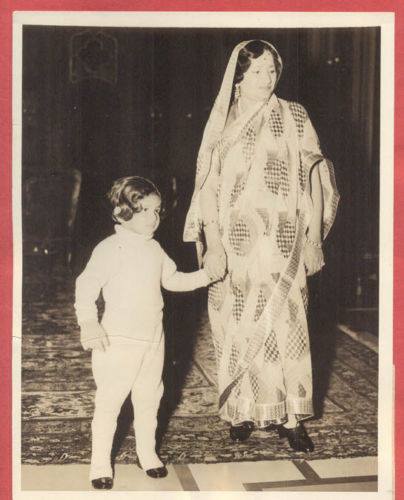
Maharani Chandravatibai Tukojirao Holkar with grand daughter Maharani Usha Holkar.
In 1926, Maharaja of Indore Tukojirao Holkar abdicated his throne for his son Maharaja Yeshwantrao Holkar to avoid judicial inquiry about his role in Bawla murder case. Hence, it became imperative to decide on the new successor to Khasgi Gadi. But the 1926 succession to Khasgi Gadi was controversial. This controversy started with the complaint sent by Maharani Chandravatibai Holkar, senior wife of Ex Maharaja Tukojirao Holkar who sent a complaint to Governor General and Viceroy of India about the mental and physical torture she received from her husband and was kept away from her children. After abdication in March 1926, three anonymous letters reached the office of the Vice and Governor General of India stating that Maharani Chandravatibai was forced to abdicate Khasgi Gadi due to mental and physical assault done on her directly or indirectly by her husband. Also it came to light, that Maharani Chandravatibai was under a form of house arrest for nine years since 1917, she was falsely declared insane by Dr Bhandarkar in lieu of bribery from Ex Maharaja and Junior Maharani and she didn’t received her annual income of Rs 1 lakh from Khasgi for 8 long years. The letters prayed that Senior Maharani Chandravatibai should be allowed a pension and should have the liberty to stay on her own in Indore if Regency is not given to her and that her dues from Khasgi are released. The letters also highlighted that the Agent to the Governor General was in favour of Ex Maharaja who is expressed that the letters exaggerated the conditions of Maharani Chandravatibai Holkar. However, when Maharaja Yeshwantrao Holkar ascended the throne and was conveyed about these anonymous letters by the British Government, he spoke to his mother and sorted out her insecurities and fears on her life.
.jpg)
Naharaja Yeshwantrao Holkar and his first wife Maharani Sanyogita Raje Holkar who ascended the Holkar throne from 1926 to 1948.
Again in 1936 to 1937, the institution of Khasgi was revived for a brief period but sans a separate budget or a separate administration to manage all the properties. The institution of Khasgi takes a new turn when India became independent and the erstwhile princely state of Indore joined Indian Dominion in 1947.
